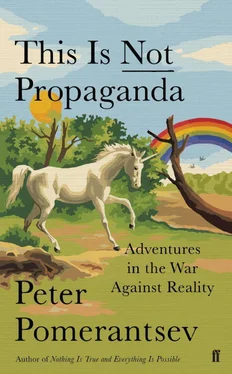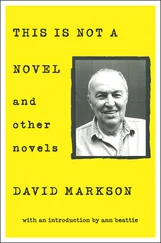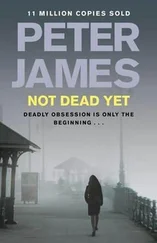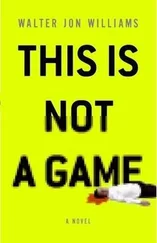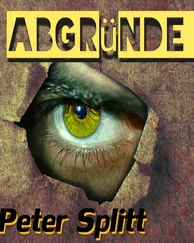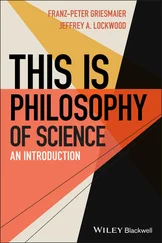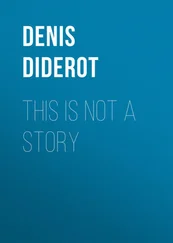‘It’s like a nightclub,’ said Alberto. ‘As soon as the lights go out you can be whoever you want.’
So had Alberto been frightened merely by pranksters? One could barely blame him for having fled abroad: violence was so casual in Mexico it would be careless to ignore cascades of death threats.
Alberto saw a greater problem. He still believed that the Internet could reveal a society’s true needs and desires, demands for change lurking latent amid the fluctuations of search engines and algorithms. The tragedy of digital manipulation was not just that individuals were harassed and abused, but that people were once again being separated from their own reality. For seventy years Mexico had been a one-party state in which ‘truth’ had been dictated top-down. People had accepted the reality the regime imposed on them as normal. Today bots, trolls and cyborgs could create the simulation of a climate of opinion, of support or hate, which was more insidious, more all-enveloping than the old broadcast media. And this simulation would then become reinforced as people modified their behaviour to fall in line with what they thought was reality. In their analysis of the role of bots, researchers at the University of Oxford called this process ‘manufacturing consensus’. [11] Woolley, Samuel C. and Douglas R. Guilbeault, ‘Computational Propaganda in the United States of America: Manufacturing Consensus Online’, Samuel Woolley and Philip N. Howard (Eds), Working Paper 2017.5 (Oxford, UK: Computational Propaganda Research Project); http://blogs.oii.ox.ac.uk/politicalbots/wp-content/uploads/sites/89/2017/06/Comprop-USA.pdf .
It is not the case that one online account changes someone’s mind; it’s that en masse they create an ersatz normality. Over the decades there have been many studies showing how people modify their behaviour to fit in with what they think is the majority point of view. In 1974 a German political scientist and pollster called Elisabeth Noelle-Neumann looked into research that showed how people will go along with the majority opinion in order to fit in. [12] Griffin, Em, A First Look at Communication Theory, 7th edn (New York: McGraw-Hill, 2008); http://www.afirstlook.com/docs/spiral.pdf .
The need to belong is one of the deepest human inclinations, Noelle-Neumann argued, and people are motivated by fear of isolation; that is why exile, expulsion from the group, is one of the oldest forms of punishment. [13] Noelle-Neumann, Elisabeth, The Spiral of Silence: Public Opinion – Our Social Skin, 2nd edn (Chicago, IL: University of Chicago Press, 1993).
In the age of mass communication, media becomes the indicator by which people decide what the dominant public opinion is. Noelle-Neumann rather prettily describes the dynamic as a ‘spiral of silence’. On one side are interpersonal connections, which push alternative opinions up the spiral; on the other are mass media, which push them down. At the bottom of the spiral lies the silence.
Noelle-Neumann defined two types of people who fight against the silence. The first are what she termed the ‘hardcore’, who feel so rejected by society they don’t care what anyone thinks of them and revel in a lost, invented past. [14] Ibid., p. 218.
The other type is the ‘avant-garde’: reformers and activists who do want people to listen to them despite all the setbacks. ‘Those who belong to the avant-garde are committed to the future and thus by necessity, are also isolated; but their conviction that they are ahead of their time enables them to endure… The chance to change or mold public opinion is reserved to those who are not afraid of being isolated.’
The latter description seemed to fit Lyudmilla, Alberto and Srdja rather well.
‘Dark days are coming, Peter,’ Alberto told me when I was back in London. ‘A new generation of bots and trolls are pushing us further and further into a world of pure simulation.’
Parodying Protest
While regimes have become adept at disrupting and dismaying protesters, the real art is to co-opt the tactics of Srdja Popović for authoritarian aims, to reverse-engineer ‘how to bring down a dictator’ in order to strengthen one – and thus to parody protest movements until they lose their power.
The Kremlin had started thinking about how to create their own variation on the colour revolutions almost the moment they took place. As early as 2004 the then chairman of the Duma Foreign Affairs Committee, Konstantin Kosachev, declared: ‘[Russia] cannot explain the purpose of its presence in the post-Soviet Union… The West is doing this under the banner of democratisation, and one gets the impression we are doing it only for the sake of ourselves… Our activeness is following too openly Russian interests. This is patriotic but not competitive.’ [15] Kosachev, Konstantin, ‘Neftegazovaia Diplomatia kak Ugroza Marginalizatsii’, Nezavisimaya Gazeta, 28 December 2004; http://www.ng.ru/world/2004-12-28/5_uspeh.html (last accessed on 7 July 2009).
Inside Russia the Kremlin created a ‘patriotic youth movement’ called Nashi (which literally means ‘Ours’), one of whose stated aims was to stop any Srdja-style colour revolution from ever taking hold in Russia. In former Soviet republics the Kremlin developed networks of Russian cultural centres to serve diaspora populations, and in 2007, in Estonia, the world saw what a Kremlin-inspired version of ‘colour’ street protest might consist of.
*
‘This one was shot, this one was disappeared – apparently killed – this one was deported.’ Toomas Ilves, president of tiny Estonia, walked me down a long corridor in his Tallinn residence, pointing out portraits of the men who led the country during its first period of independence – between the fall of the Russian Empire in 1917 and its occupation by the Soviets during the Second World War, an occupation that continued until the fall of the USSR in 1991.
Ilves was dressed in his trademark tweeds and bow tie, a counterpoint to his mission to make Estonia the most digitally progressive country in Europe. Under his presidency the government declared Internet access a human right: citizens can vote, get medical prescriptions, deal with taxes and bank electronically, and pay for parking with a mobile phone. A new school programme required that all pupils learnt to code from the age of seven. This ‘e-Stonia’ project is practical – a search for an economic niche – but also symbolic, a way to tear the country away from its Soviet stereotype as Moscow’s backward province. This was meant to have been sealed in 2004 with EU and NATO accession. But this sense of a smooth historical journey, from liberation from the Kremlin, through Internet-powered reforms and into the security of NATO and joining the club of liberal democracies in the EU, would soon be undermined.
Since Soviet times, every year on 9 May Russian nationalists and war veterans living in Estonia had gathered to celebrate Victory in the Second World War Day in the centre of Tallinn, at a statue known as the Bronze Soldier [16] McGuinness, Damien, ‘How a Cyber Attack Transformed Estonia’, BBC News, 27 April 2017; https://www.bbc.com/news/39655415 .
– a large Aryan-looking hunk who commemorated Soviet victory over the Nazis. Around a third of Estonians are Russian, or at least primarily Russophone; the vast majority of these are descendants of Russians who were relocated from the Soviet Union after the Second World War, while thousands of Estonians were being deported to the Gulag. Between 1945 and 1991 the number of Russians in Estonia rose from 23,000 to 475,000. After 1991, some felt like second-class citizens in the new, independent Estonia. Why weren’t prescriptions available in Russian? Why couldn’t Russophone towns have street signs in Russian? Why did you have to take a language test to gain citizenship if you had been born in Soviet-occupied Estonia? Over 70 per cent watched Russian state media, easily available in Estonia, which claimed that the Soviet Union had never invaded Estonia in the first place, that Estonian Communist forces had invited them (in reality these had been Soviet agents). Russian politicians would suggest that Estonia was not a ‘real country’. Russian historical TV dramas featured ‘Estonian fascists’ as the go-to baddie. [17] For background, see The Humanitarian Dimension of Russian Foreign Policy Toward Georgia, Moldova, Ukraine, and the Baltic States, Centre for East European Policy Studies, International Centre for Defence Studies, Centre for Geopolitical Studies, School for Policy Analysis at the National University of Kyiv-Mohyla Academy, Foreign Policy Association of Moldova, International Centre for Geopolitical Studies (2010, Gatis Pelnens, Ed.). The Security Police of the Republic of Estonia, Annual Review 2003, p. 12.
Читать дальше
